Art of the Genre: An Interview with David Martin
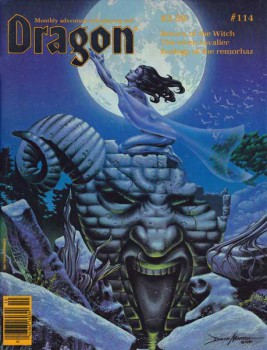 So it’s April, which is a lovely time of year here in L.A., with moderate temperatures in the mid-60s and 70s most days as the city gets ready for June Gloom to set in and cast a shadowy marine layer over everything for a month.
So it’s April, which is a lovely time of year here in L.A., with moderate temperatures in the mid-60s and 70s most days as the city gets ready for June Gloom to set in and cast a shadowy marine layer over everything for a month.
I was hoping to relax in the splendor of Ryan Harvey’s satisfied silence at the success of Captain America: The Winter Soldier, as well as Kandi’s casting as innocent bystander #3 for the next Michael Bay film (you know, the beautiful young woman who gets filmed in slow motion from a gratuitous boob angle as some huge vehicle flies over her head), when my phone decided to ring.
Now there is only one person that calls me when I really, really don’t want to get a call, and that is always our editor John O’Neill. To make things worse, this time not only was he intent on sending me out for an interview to the New Mexico desert (temps already climbing in to the 90s), but I was to take Goth Chick with me.
Why? I have no idea, as her mission was coded ‘top secret’, although my money is on a clandestine meeting with UFO witnesses around Roswell. Whatever the case, I soon found myself boarding a plane (yes, out of Long Beach again) with Chick. I was pleased, however, that she was searched by the TSA four times before she made it through security, but that joy quickly evaporated when I had to sustain the brunt of her dark mood for the two-hour flight into Albuquerque.
Still, Chick is always fun to have around, and after a few miniature bottles of vodka, followed by a solicitation to join her in the ‘Mile High Club’, she was back to her caustically lovely self. Now I know what you’re thinking, but a gentleman never kisses and tells, and besides, what happens above Vegas, stays above Vegas.
From Albuquerque, I went east, down the 40 to Cedar Crest and Chick left to parts unknown in a black hearse (I didn’t realize you could even get a hearse at Enterprise, but evidently you can), with my final destination being The Greenside Café. It was here I met longstanding fantasy art legend David Martin. The following is an account of our conversation and I have to say it was a thrill, even if that statement probably vindicates Mr. O’Neill in some way.
An Interview With David Martin
Conducted and transcribed by Scott Taylor, April 2014
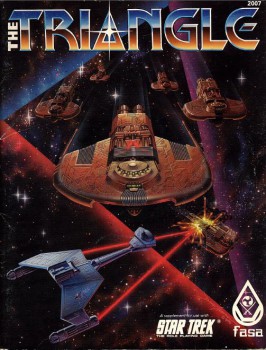 BG: Can you provide a brief history of why you began your career in art?
BG: Can you provide a brief history of why you began your career in art?
DM: It’s difficult to give a definitive answer. It probably began for me as a child. “Look what I did Mom!” Isn’t that how a career really begins for all of us? We seek approval as a child and some damn fool tells us we’re good at something. My mother also told me I’d never make a living drawing monsters. By then, however, I was already set on the path. I must admit more than a little satisfaction when I told her, many years later, that drawing monsters was exactly what I did for a living.
BG: By the 1980s you had become involved in working for TSR. Can you talk a bit about that experience and how difficult it was to break into the company?
DM: Good question, but a long story. I really think there is no such thing as a ‘big break’, but if I look back, it was probably the Origins convention in 1984. I made sure to leave a flyer on every table in the convention hall Friday evening. The next day I spoke to just about every company in the field. I left with seven future clients.
For years I had sent samples to TSR, determined to land the biggest company around at that time. I didn’t know that TSR had no official art director, just the four original artists who did the bulk of TSR’s covers. My portfolios were probably forwarded directly into the trash can.
Oddly, the 700 Club aired an article about Dungeons & Dragons being a ‘satanic worship game’. They mentioned the death of a twelve year-old boy, a D&D player. They conveniently left out the fact that his parents routinely locked him in the closet, sometimes for days, while reading Bible verses to him. In reality, D&D was probably the only fun he had.
 TSR had been trying to catch a broadcast of the article for their legal department to see if the item was ‘actionable’. I sent a VHS copy to Dieter Sturm, their public relations manager at the time. At the Origins convention Kevin Bloom, CEO of the corporation, came to my table and put me in touch with Kim Mohan, who edited Dragon Magazine. Two months later I did my first cover for the magazine.
TSR had been trying to catch a broadcast of the article for their legal department to see if the item was ‘actionable’. I sent a VHS copy to Dieter Sturm, their public relations manager at the time. At the Origins convention Kevin Bloom, CEO of the corporation, came to my table and put me in touch with Kim Mohan, who edited Dragon Magazine. Two months later I did my first cover for the magazine.
BG: Your career spans over thirty years in the industry of role-playing games. Is there a take-away that you have concerning what you created during that time?
DM: In the early days most companies in the industry were ‘Mom and Pop’ companies struggling to get their products onto the shelves in ‘Mom and Pop’ gaming shops across the country. There were many instances where I had to literally turn out something overnight because some other artist didn’t give them a professional product. I hated this, but it endeared me to many small companies who later became larger companies. If the truth be known, I’d rather work for a small company that really needs me than to be one of fifty artists oiling the giant gears of a corporation.
My ‘take away’ might be ‘always make your deadlines’ and ‘be loyal to the companies you work with’. If you look at it from their point of view, they are trusting someone they don’t know, thousands of miles away, with a very important task. In my opinion, the cover is the single most important element in the production of a game or book. If the cover doesn’t attract the attention of a potential buyer, the product dies on the vine. Certainly there is a ‘core audience’ for various products; fans who will buy any new expansion set for a particular title. That’s great if you don’t care about growing a larger fan base, but if you want to expand your audience, there’s always that first time buyer to consider.
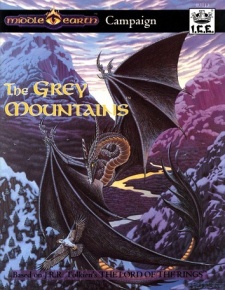 BG: I can well remember my favorite early work of yours, that being the cover to Dragon #114. Can you provide any background on this paintings creation?
BG: I can well remember my favorite early work of yours, that being the cover to Dragon #114. Can you provide any background on this paintings creation?
DM: I still consider that one a ‘breakaway’ piece for me. It’s difficult to pinpoint exactly what influenced me. I wanted to create something with a blue color scheme and a painting that showed my knowledge of the human form. I was concerned about the satyr statue the girl is kneeling upon, since the company had already been accused of ‘satanic worship’. Kim Mohan, the dear man, published it anyway, apparently unconcerned about recent history. I went on to work with him when he became AD of Amazing Stories.
BG: Do you have a favorite piece of artwork or one that has greater meaning than others?
DM: Most of the work I did for games was ‘made to order’ in the sense that the clients wanted something very specific to the game. I had more freedom with the magazine covers since they didn’t relate to anything in particular. Listing my favorites might not be the same as listing the most successful pieces. Sometimes I loved a piece because I learned something while painting it. I saw something in it that no one else saw. Other people would love something which wasn’t one of my favorites. It was my goal to satisfy both criteria, but of course, this was rarely possible. I was still experimenting with various approaches: low angle shots and even aerial views. I tried to keep track of what was on the shelves and attempted to create something which stood out with an unusual color scheme or a different approach to the subject matter. I knew this was the best way to sell the book or the game.
BG: I can count at least four other fantasy artists with the name David Martin. Did you ever find it daunting or confusing working in an industry with so many folks sharing your name?
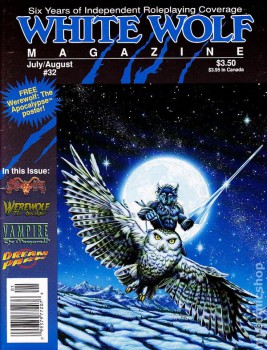 DM: I’m only aware of one other David Martin. He also worked with TSR and once actually received a check intended for me. TSR re-issued the check and I don’t know what they did about the other David Martin. Success in any field rests with longevity. I think I probably just ‘outlasted’ the other guys, and other than the instance I just mentioned, it didn’t seem to be a problem. However, who knows how the other guys may have damaged me in ways I never even became aware of, or I them.
DM: I’m only aware of one other David Martin. He also worked with TSR and once actually received a check intended for me. TSR re-issued the check and I don’t know what they did about the other David Martin. Success in any field rests with longevity. I think I probably just ‘outlasted’ the other guys, and other than the instance I just mentioned, it didn’t seem to be a problem. However, who knows how the other guys may have damaged me in ways I never even became aware of, or I them.
BG: I well remember seeing the cover for Dragon #101 and thinking how much it reminded me of a Boris with a more fantastic sense of form. Who would you say was one of your biggest influences to your craft?
DM: I had met Boris and certainly thought he was a very charming, professional man. I don’t think I was influenced by him, at least not so much as the TSR guys. His technique is amazing, but I tried to study the way he did his work without imitating his style. Boris was very photographic in his approach, and if you paint like a camera why not just use a camera? Art is about creating a unique style for yourself; something to make you stand out. I got lots of advice about what style to use, especially in the book industry. Some of it came from the father of Science Fiction art, Kelly Freas. He told me to use my Cadmium Red as if it were the most precious substance in the world. “Keep your colors muted” he said. “You paint like I do; like you’re painting with light.” “Thanks”, I replied, “but I think I’d rather just go on painting with light.”
Now when you look at the guys who are really well known, their styles are all very different. As for my influences, I’ve always felt that if your influences are all from one other artist, your work can only look like that artist’s work. The key is to have hundreds of influences–to look at everything and understand what makes it stand out. Occasionally, I would actually imitate the style of Frazetta or Terbush in my spare time. It’s a great way to discover how they do what they do. I don’t recommend you do this for published work. People don’t understand a parody or an experiment–they just think you’re stealing.
BG: You did some really incredible work for FASA on Shadowrun, do you have any memories you’d like to share on that work or how it came about?
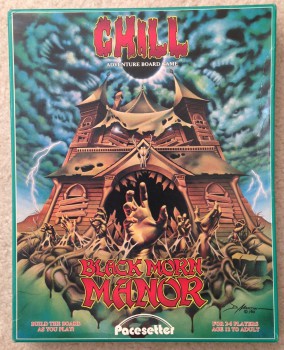 DM: I was a fan of the work of William Gibson, the author of “Neuromancer” and “Count Zero”. ‘Shadowrun’ was a bizarre and unique game at the time, and not just that, but the FASA guys had this amazingly subtle sense of humor. I had grown pretty close with some of them and we had a great laugh about some of the ideas. I think being really enthusiastic about what you’re doing certainly aids the creative process. After the first set of black and white illos I did for them, Jim Nelson told me that the work was ‘what the art should always have been.” It’s still one of the nicest compliments I ever received. I still consider the color work I did for the card game some of the best card art I ever produced (including MTG).
DM: I was a fan of the work of William Gibson, the author of “Neuromancer” and “Count Zero”. ‘Shadowrun’ was a bizarre and unique game at the time, and not just that, but the FASA guys had this amazingly subtle sense of humor. I had grown pretty close with some of them and we had a great laugh about some of the ideas. I think being really enthusiastic about what you’re doing certainly aids the creative process. After the first set of black and white illos I did for them, Jim Nelson told me that the work was ‘what the art should always have been.” It’s still one of the nicest compliments I ever received. I still consider the color work I did for the card game some of the best card art I ever produced (including MTG).
BG: When working on art today, have there been any new paths you’ve started, either digital or new genres?
DM: Digital was a revelation, even though I resisted it for years. I taught myself Photoshop in a month and wanted to take advantage of the amazing things it could accomplish, specifically ‘layers’. I actually let the medium change my style. I felt it was important to let the learning curve remain organic in order to explore it completely. Many people don’t recognize my style when they see my digital work. The greatest advantage is that you can actually see the finished art before publication. From that point it became less about producing a well-rendered image than it did about producing the ‘right’ image. When the hairs on my arms stood up, I knew I had something great in progress.
BG: If you could work on one product line you never had a chance to help define, is there a game that comes to mind?
DM: I’ve been very fortunate (and very persistent) in working with just about everyone. Often a new client would say that they had created something ‘completely original’. My response was “Let me look in my portfolio for something similar”. I always found something like what they wanted.
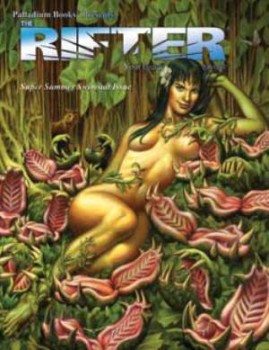 In retrospect I wish I’d worked with Richard Garriott. I did a cover for his company through Steve Jackson, but never directly with the man himself. Now the guy has actually been to space! Not only would he have been a good client, but an interesting man to know.
In retrospect I wish I’d worked with Richard Garriott. I did a cover for his company through Steve Jackson, but never directly with the man himself. Now the guy has actually been to space! Not only would he have been a good client, but an interesting man to know.
BG: You’ve done nearly a dozen cover pieces for I.C.E.’s Middle-Earth Role-Playing. Can you speak a bit about your take on Tolkien’s world?
DM: Of course, the novels were a cornerstone of the Fantasy genre. Authors are still trying to recapture this very singular work. At the time I thought I did a good job with the subject, but now, after the movies have been made, I wish I could re-do some of them. I honestly can’t imagine how an author’s work could be more beautifully given flesh than in those films. Of course I’m a big fan of what is obviously the greatest fantasy series ever written.
BG: What are the future plans for your career as the 20-teens continue to move ahead?
DM: I think I’d like to paint some of the paintings I’ve always wanted to paint for myself. I have paintings planned that were never finished going all the way back to the eighties. I’m looking forward to doing work that doesn’t have things blowing up in it. Mostly, I want to do work that I’d like to see. Not necessarily even Science Fiction. My most recent is a black leopard in Angkor Watt. I’ve always thought the wildlife artists were the most skilled painters in any field, so I’ll probably do more of that kind of work. Whatever subject matter I choose, I won’t be confined to the standard book or game cover format. I found that composition extremely confining. I’ll probably work large and detailed because that’s what people seem to love about my work. I won’t be working for reproduction, but for viewers who see my work in the flesh. I promise to try to do work that isn’t like anything else my fans have seen, and I’m looking forward to the challenge.
If you like what you read in Art of the Genre, you can listen to me talk about publishing and my current venture with great artists of the fantasy field or even come say hello on Facebook here. And my current RPG Art Blog can be found here.
I’m the “one other David Martin.”
I learned of Leslie’s exquisite work at the art show for the 1980 World SF con in Denver. A year later I finally got to meet him and his lovely first wife Jean Elizabeth. Two formidable talents ! The Arthurian wedding self-portrait they did remains my favorite piece of his.
Answering one point that touched on me– Most of my work for TSR was in the field of writing. I just attributed the unexpected checks (yes, plural) to TSR’s famously inaccurate and flamboyant financial practices and unexpected book royalties. A mutual friend, the artist Lubov, finally cleared up that mystery (nice lady and a helluva an artist).
Important lesson there, kids– if you’ve got a common name, your middle name is kinda useful.
I remember the silly apology in Dragon 116 (I think) for issue 114…
TW: Well, at least it was an apology for the witch class, and not the cover painting 🙂
David,
Good advice! I know artist Matt Wilson [ala his Mathew D Wilson signature] has the same problem. Oh, and try Scott Taylor, my name sucks as well! 🙂
I seem to remember a “we went too far with that cover” thing a couple of months later…
But who knows that was nearly…ACKKKK!!! 30 years ago…
TW: Well, I just read #116 from Roger Moore and no mention of the artwork. It might have been later, but at least not in that particular Dragon 🙂
Darling Art,
I agree John’s budget cutting measures are getting tiresome. Imagine asking us to take a red-eye in coach no less. I mean, why are we being asked to economize for a Jacuzzi in his office anyway?
My apologies for being cranky, but I positively ruined my black manicure on those tiny little bottles and that bathroom was purgatorial (not in the good way).
So what happened above Vegas can most definitely remain there. Next time I’ll book the dirigible.
Love the interview by the way.
Yours, Chick
PS: The New Mexico coven found your Roswell speculation amusing.
The New Mexico Coven… I KNEW IT! 🙂
Has David’s “Spirit of the Night” ever been available as a print?
I feel like I’ve been looking for one for 35 years.